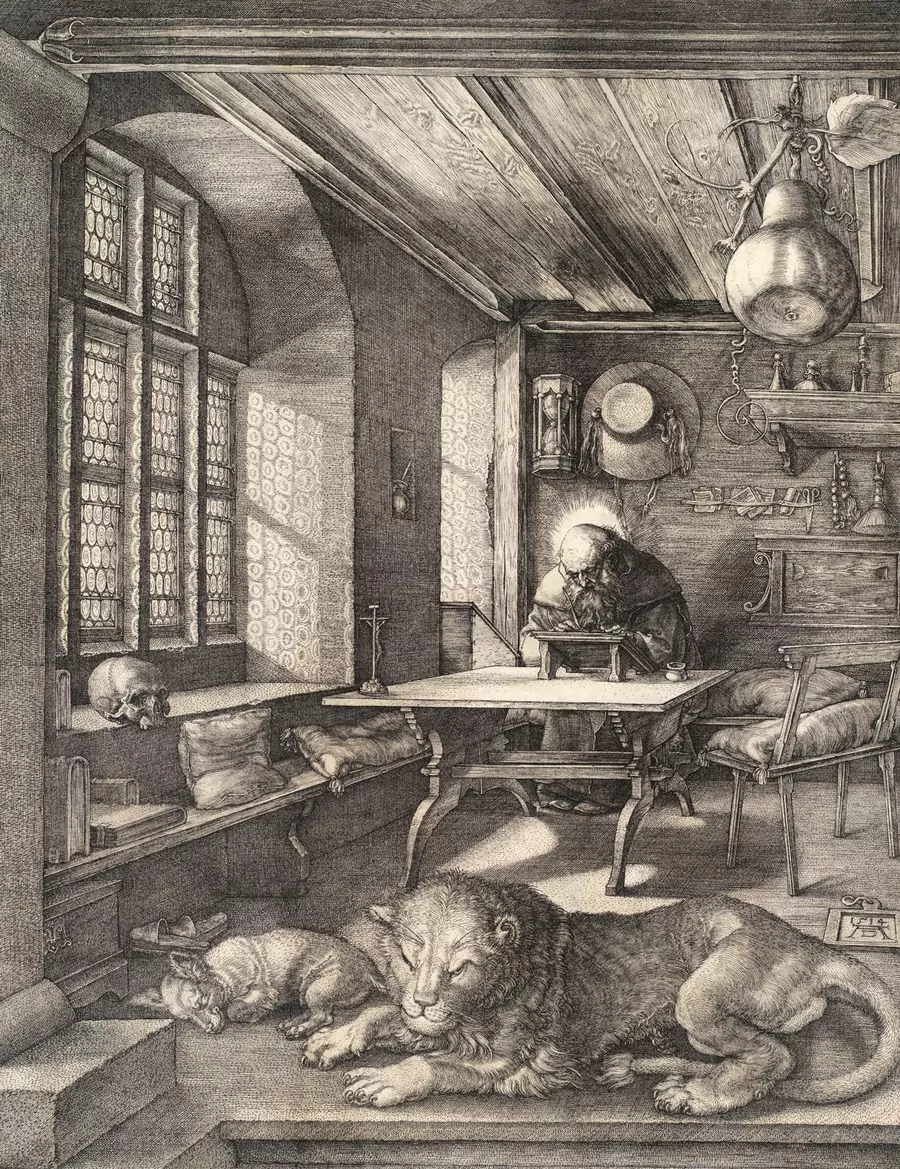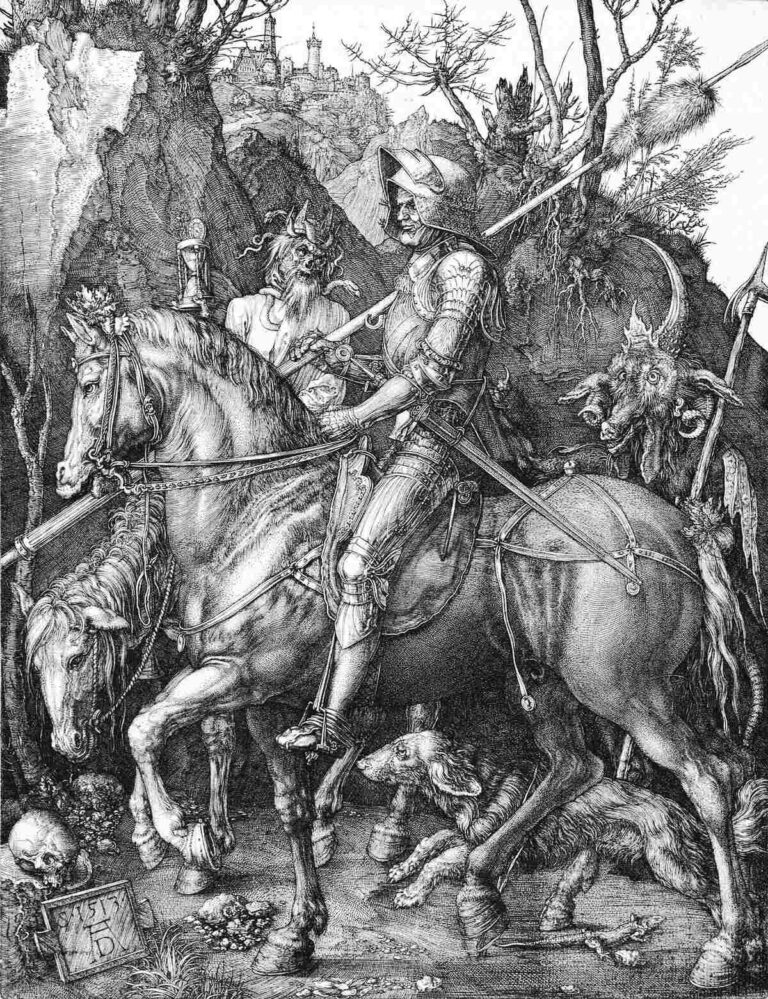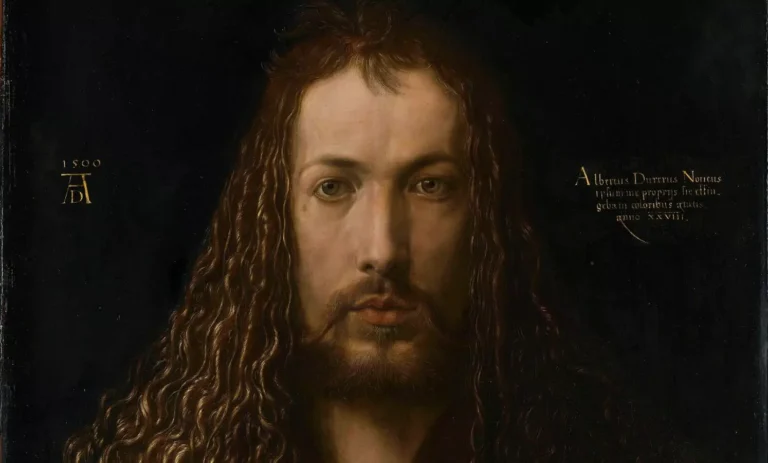Looking for a muse? Check no further. Discover the Best of Art, Culture, History & Beyond!

Title: Saint Jerome in His Study
Artist: Albrecht Dürer (German, Nuremberg 1471–1528 Nuremberg)
Date: 1514 Medium: Engraving
Dimensions: sheet: 9 11/16 x 7 7/16 in. (24.6 x 18.9 cm) trimmed on plate line
Of Dürer’s three technically brilliant Meisterstiche (master engravings) of 1513 and 1514, this is the one whose interpretation seems the most straightforward.
Saint Jerome, translator of the Bible into Latin (the Vulgate) and thus the exemplar of the Christian scholar, is seated in a typical study of Dürer’s day. He works peacefully at a slanted writing table, and his lion and dog slumber equally peacefully in the foreground. The table, on the corner of which is a cross, is typical of the Renaissance. An imaginary line from Jerome’s head passing through the cross would arrive at the skull on the window ledge, as if contrasting death and the Resurrection. The lion in the foreground is part of the traditional iconography of St. Jerome, and near it is a sleeping dog, an animal found frequently in Dürer’s works, symbolizing loyalty. Both creatures are part of Jerome’s story in the Golden Legend (c. 1260), which contained fanciful hagiographies of saints.
The light of his halo and the sunlight pouring in through the windows are in perfect equilibrium, and recurrent horizontals in the composition add to the pervasive sense of repose and harmony.
Jonah and the gourd vine
Using a dried gourd hanging from the rafters, Dürer memorializes Jerome’s courage, in the face of a long brewing philological controversy with St. Augustine in his preference for Greek over Latin nomenclature for the fast-growing plant known in Hebrew as קיקיון (qiyqayown) encountered only this once, in the Book of Jonah.
Skull and Crucifix, and the Hourglass
The positioning of the Crucifix on Jerome’s desk is such that when he looks at it he can also see the skull by the window. Looking at the crucifix reminds of the resurrection of Jesus, which righted the wrongs of Adam leading to death, represented by the skull. The hourglass represents the finite space of time that is a man’s life. Viewing these symbols together leads to the thought of man’s mortality, and the method by which to save the immortal soul.

This article is published on ArtAddict Galleria, where we explore the intersections of art, history, and culture. Stay tuned for more insights and discoveries!



